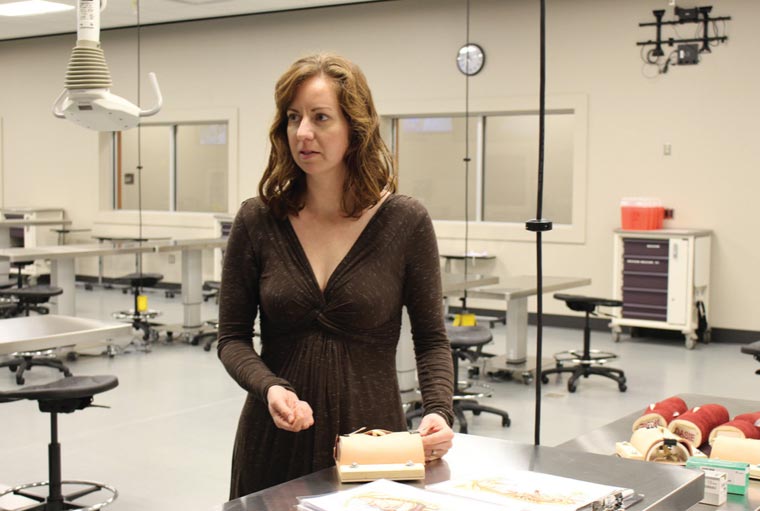
May 01, 2020
What is the role of animals in veterinary education?
Animals in veterinary education were one of the key topics during several sessions at the Association of American Veterinary Medical Colleges 2020 Annual Conference and Iverson Bell Symposium, March 8-10 in Washington, D.C. The “Use of Animals in Education” symposium focused on how animals are used in veterinary colleges’ curricula.
“We had a good open discussion,” said Dr. Dean Hendrickson, Colorado State University, in an interview afterward with JAVMA News. “The big thing is the excitement. Where do we want to go, and what do we want to do?”

The event included several key goals for educators. Among them was starting a conversation on how each veterinary college is currently using animals in its curriculum and what the use of animals may look like in the future.
Read the AAVMC policy on “Use of Animals in Education” and the AVMA policy on “Use of Animals in Research, Testing, and Education”.
Donated to science
Dr. Phillip Nelson, the dean of the Western University of Health Sciences College of Veterinary Medicine, said it is necessary for leadership in veterinary academia to think about how the profession uses animals.
The founding faculty at the Western University veterinary college did just that. The Willed Deceased Animals for Veterinary Education program at the veterinary college encourages pet owners from 90 sites in Southern California to donate their pets’ remains to the veterinary college for anatomy and clinical skills education. The veterinary college uses models of animals and student-owned animals for routine procedures.
The Cummings School of Veterinary Medicine at Tufts University also has a willed-body program.
However, despite the success of the programs at these two universities, most veterinary colleges in the U.S. face challenges implementing similar programs because of the location of their campuses.
“Unfortunately, there are a number of metro areas that would support a program, but veterinary schools are located in rural areas, and that creates separate challenges,” Dr. Nelson said.
Western University is located in Pomona, California, about 30 minutes outside of Los Angeles, and Tufts University in Grafton, Massachusetts, is about 45 minutes west of Boston.

Using models
Although many veterinary colleges have had issues implementing willed-body programs, most have found it easy to include models of animals in the curriculum.
Dr. Julie Hunt, director of small animal clinical skills at the Lincoln Memorial University College of Veterinary Medicine, designed and developed the clinical skills curriculum at LMU.
“There’s no question in my mind,” Dr. Hunt said. “You can absolutely teach and improve surgical skills using models. Early on, a huge amount of techniques can be used on models,” and models can be used for practicing clinical skills repeatedly.
The models do not replace live surgery. But Dr. Hunt said she believes that animal models can be used instead of nonsurvival surgeries, which can cause stress and well-being issues for students.
The LMU curriculum includes a combination of live animals, cadavers, and models to teach students and for students to practice clinical skills.
Do an audit on cadavers
Models may be a key tool for students, but cadavers are still important for early anatomy classes.
Dr. Jeremy Delcambre, assistant professor in the Department of Biomedical Sciences at Colorado State University College of Veterinary Medicine and Biomedical Sciences, said he wanted symposium attendees to question themselves.
“Do you know where you cadavers are coming from? Have you done an audit on use and sustainability?” Dr. Delcambre said.
There is a shortage of dog and cat cadavers and currently only one commercial supplier. So it may be time to adapt, he added.
Future plans
Educators and veterinary leadership involved in the symposium plan to hold another event to continue the conversation but have not yet set a date.